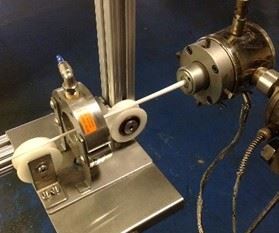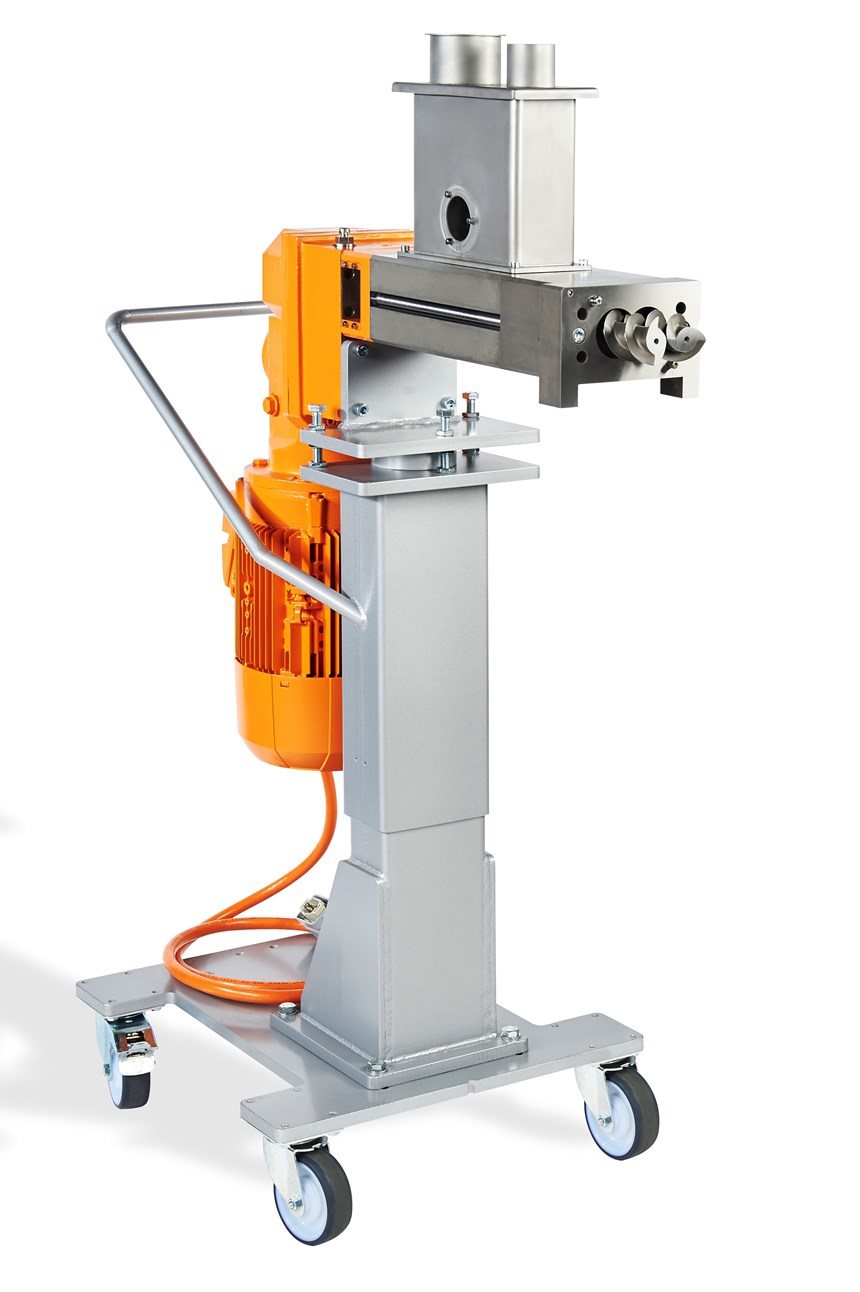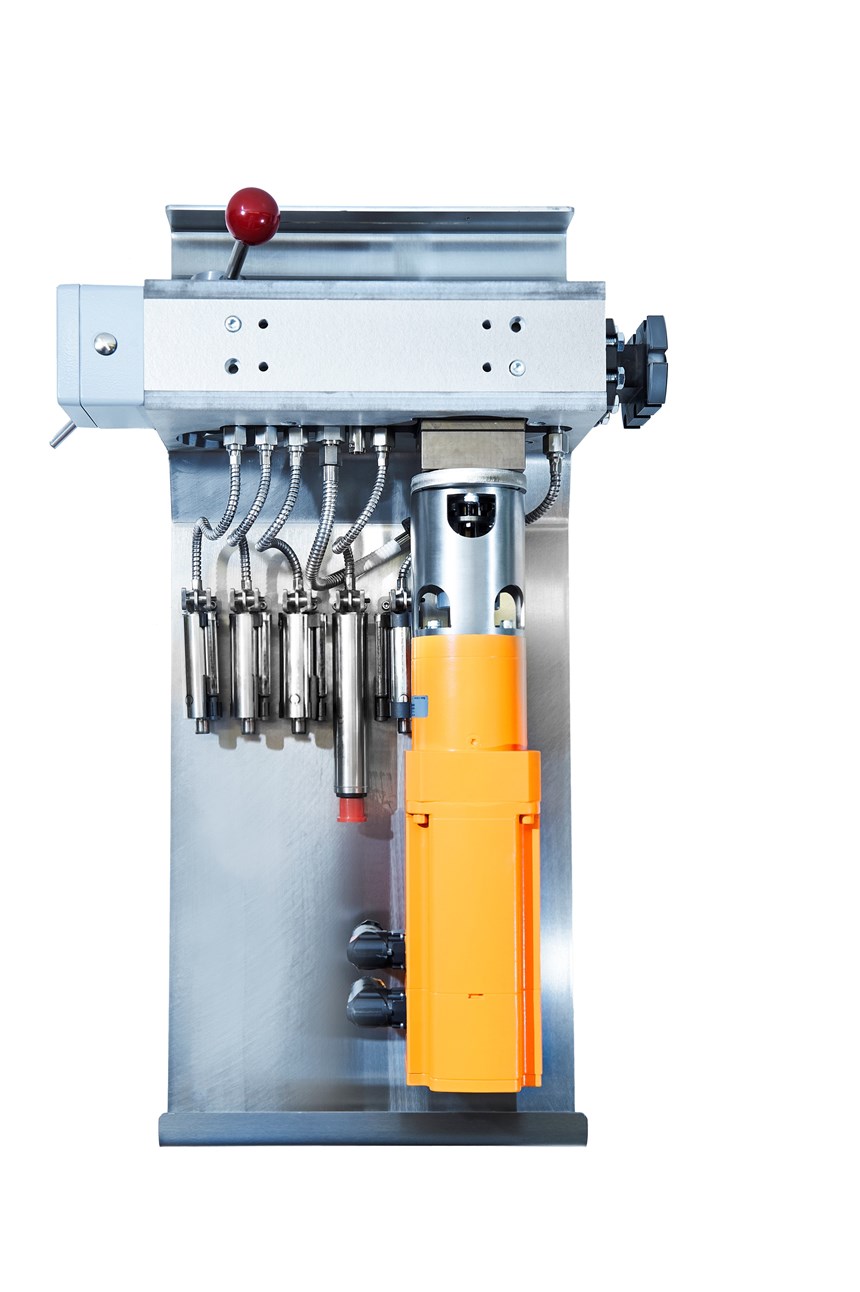Gamut of New Technologies for Compounding
Leistritz Extrusion’s wide-ranging display of twin-screw extruder related technologies at NPE2018 includes a system for manufacturing 3D filaments.
Leistritz Extrusion will feature a range of new systems for compounding at NPE2018, including complete twin-screw extrusion lines, one system designed to make 3D filaments for additive manufacturing.
A ZSE 18 system consists of: loss-in-weight feeders; the ZSE 18 co-rotating twin screw extruder; gear pump; and die to produce 1- to 5-mm 3D filaments. Downstream, the line is equipped with a custom air-rack for air-quench cooling and sizing of the filament, plus a belt puller, laser gauge, and winder. The control system will integrate closed-loop pressure control to ensure a tight-tolerance product.
The ZSE 18 system is reportedly ideal for in-line compounding of polymers with additives and active-fillers to quickly develop new filaments and formulations. Formulations can be modified “on the fly” for rapid sampling of modified filaments with different formulation percentages. A sample can be produced every 10 min.
The ZSE 18 system is rated for 797 F operation, allowing it to process high-temperature engineering polymers. Throughputs range from 2 to 44 lb/hr. Larger production ZSE systems are available for filament, profile and shape extrusion. The system will be available for testing in the Leistritz Somerville, N.J. after the show.
Leistritz is also displaying a ZSE 50 MAXX twin that includes a modular design for barrels and screws and an insulated barrel cover. A unique extended length facilitates multiple downstream operations, including multi-stage venting, liquid injection and up to two LSB 50 XX side stuffers for filler/fiber introduction into the melt stream. The ZSE 50 MAXX is ideal for a wide range of compounding applications and can be equipped with a 600-hp AC motor for throughputs of more than 2200 lb/hr at 1200 rpm.
The LSB XX series side stuffer is supplied with a high 2.0 OD/ID ratio for the screws, which can be segmented, and it can also convey materials with very low bulk densities. Segmentation allows the screws to be configured according to the needs of the raw material in use. The LSB XX can be adapted to the processing unit via tie rods. Another advantage of this side stuffer is that barrels can be jacketed for cooling or heating. Internal cooling of the screws is an optional feature.
Other equipment in the booth:
- ZSE 27 MAXX co-rotating twin-screw extruder with air-quench pelletizer attachment.
- Comparison of PLC/HMIs: Various control architectures will be displayed, including Allen-Bradley and Siemens model PLCs and HMIs. Both types are equipped with remote VPN accessibility for process analysis and troubleshooting.
- Leistritz Elongational Rheometer: This device mates to an extruder and a small amount of the melt flow is diverted, measured and returned to the extruder to facilitate on-line analysis and adjustment of shear and elongational viscosities.
Related Content
-
Strategically Manage Pressure to Help Ensure Quality in Co-Rotating Twin-Screw Extrusion
Pressure measurement provides an invaluable window into any extrusion process, but it must also be strategically managed at every stage of the process to ensure a quality part is being extruded.
-
Program Helps Compounders Configure Screw, Barrel Layout
New software from ENTEK is said to make it easier for compounders to design their own screw and barrel configurations.
-
New Machines, Spare Parts and Auxiliaries for Compounding
NPE2024: ENTEK displaying a range of products at the May show.


















